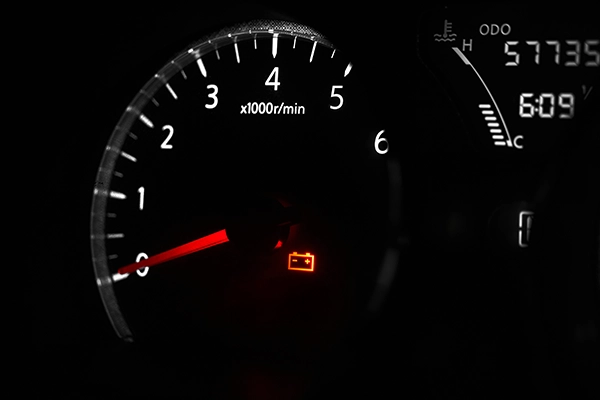Starting your car begins with the battery, and the alternator keeps it running. If either of these components is faulty or worn out, your vehicle won’t be able to operate properly. It’s vital to ensure your battery and charging system are working properly; otherwise, you may find yourself battling a dead battery or a faulty alternator.
How Does The Alternator Work?
Your car battery provides the electrical energy needed to start the engine. The car engine then rotates the alternator pulley, which is how the battery remains energized when the car is running. The battery can’t keep the engine and your electrical system powered at all times. It needs the alternator to convert the engine’s power into electricity.

Signs Your Alternator Needs Replacing
If you’re experiencing car alternator problems, you may find that your car won’t start or stay on for more than a few minutes. You might also experience problems with your battery or lights. But before this happens, you’ll likely experience one or more of these signs of a failing alternator.
Battery Warning Light on Dash
If the battery warning light appears on your dashboard, it’s usually mistaken to be a battery-related issue. However, that’s not the case; the battery warning light typically indicates there is a problem with the electrical charging system of your car, which includes the alternator.

Dim or Extremely Bright Lights
When the alternator’s voltage regulator starts failing, it may ineffectively provide voltage to your electronic systems, potentially causing headlights that are either too dim or extremely bright.
Dead Battery
Most of the time, a dead battery is just dead and has reached the end of its life cycle, in need of replacement. However, a dead battery could be a sign of a failing alternator. A bad alternator won’t effectively charge a battery to its full capacity.
To determine whether it’s a faulty alternator or a dead battery, try jump-starting the car. If everything is done correctly and it continues to run, it’s a sign that your battery may need replacing soon. If you jumpstart the car and it dies again shortly after removing the jumper cables, your alternator may not be providing enough power to the battery.
Trouble Starting or Frequent Stalling
Trouble starting your engine could potentially mean that your alternator is failing to charge the battery properly. Commonly, when you turn the key in the ignition, all you hear is a clicking sound instead of the usual engine start-up. If your car is frequently stalling out while driving and you notice the battery light on, it may be a sign that the control module isn’t getting a sufficient amount of power from the alternator to keep the engine running.
Growling or Whining Noises
Usually, when a car starts making unusual noises from under the hood, it indicates a problem with the vehicle. While some noises from cars are expected and are completely harmless, it’s always good to know what may or may not be wrong with your car. If you ever hear growling or whining noises from your vehicle, it may be a potential sign of alternator problems or drive belt-related issues.
Smell of Burning Rubber or Wires
When your alternator is failing, it may emit a burning scent similar to that of an electrical fire. When the alternator is overloaded, the system attempts to pump excessive current down its wires, overheating them and making them dangerously hot. If the wires are damaged, they cause resistance to the electricity flow, which will cause them to heat up and emit an unpleasant odor.
Alternator Service at Scott’s U-Save
The ASE-certified technicians at Scott’s U-Save have the experience and equipment to properly inspect, diagnose, repair, and replace any components within your charging system. Call or schedule an appointment online with us today at any of our four locations, and we’ll ensure your vehicle is ready to start anytime and every time. If your car needs a new battery or alternator services, give us a call or schedule an appointment at one of our four locations today!

